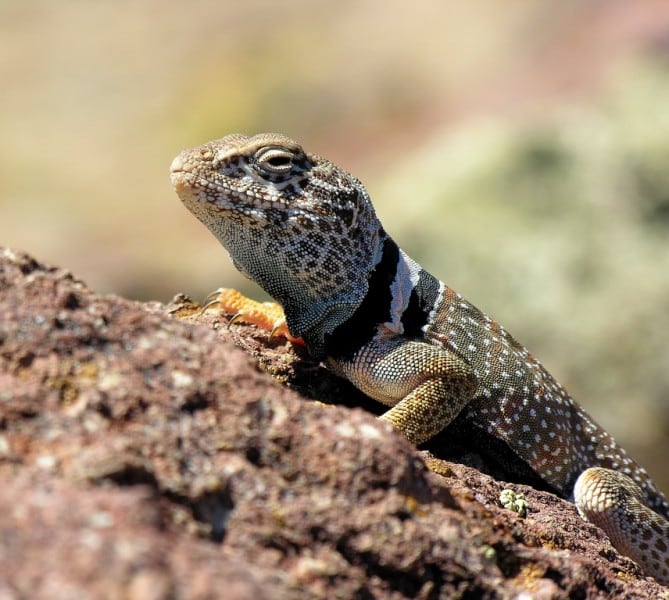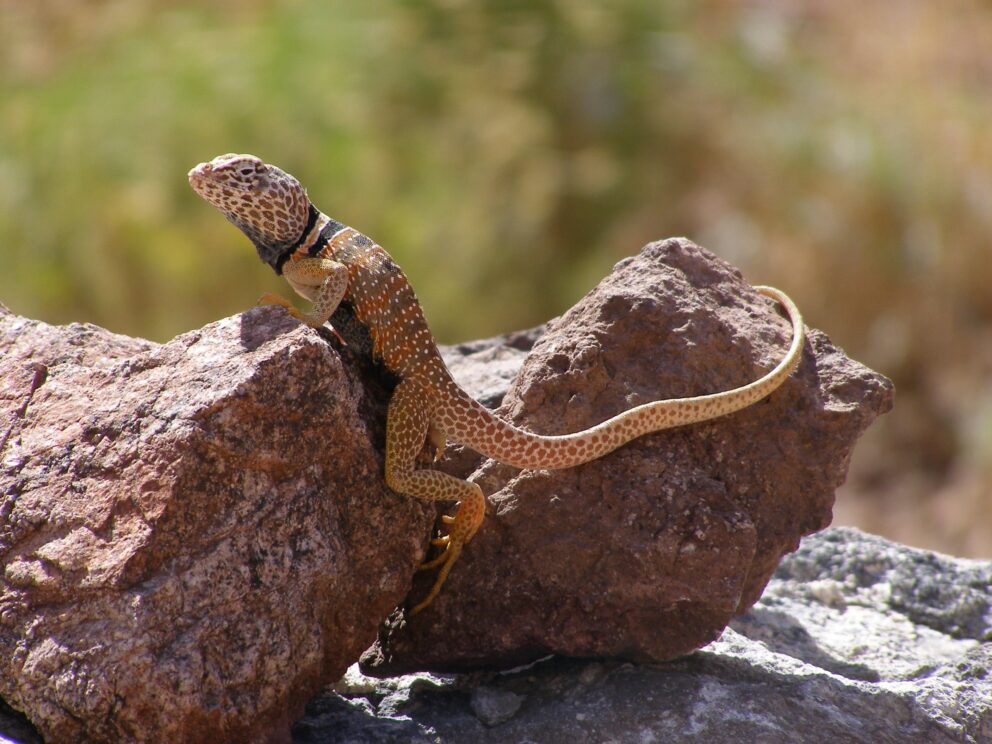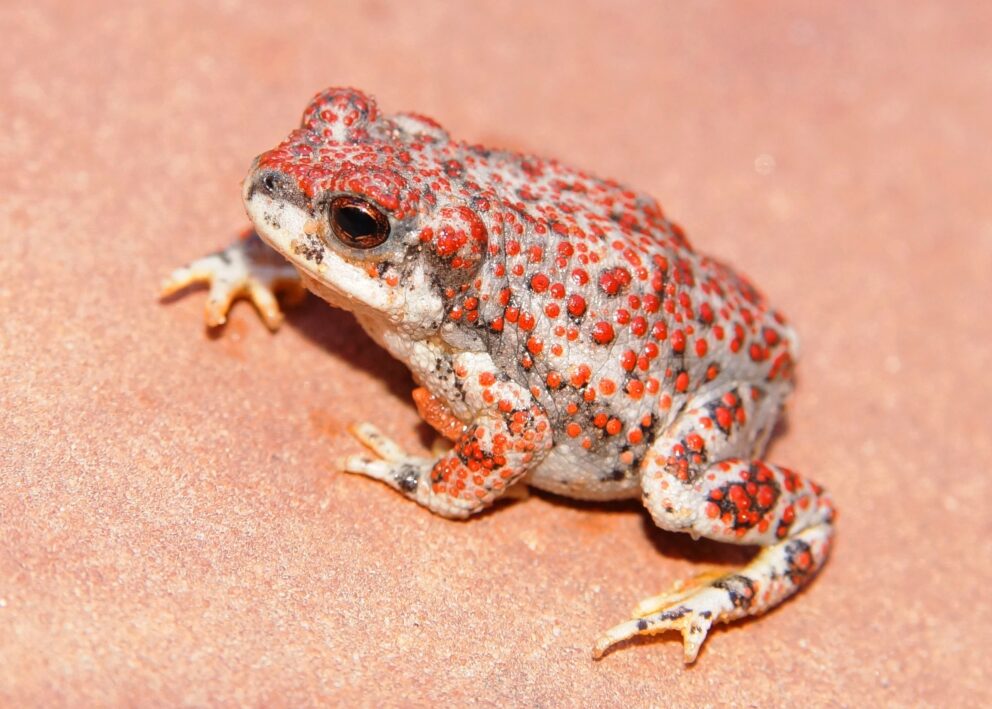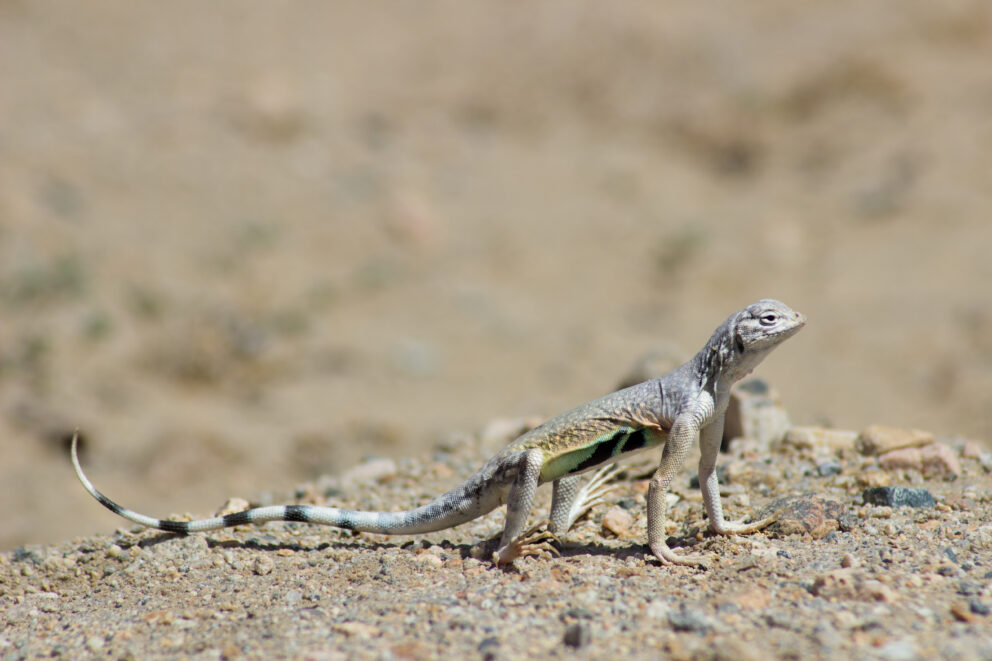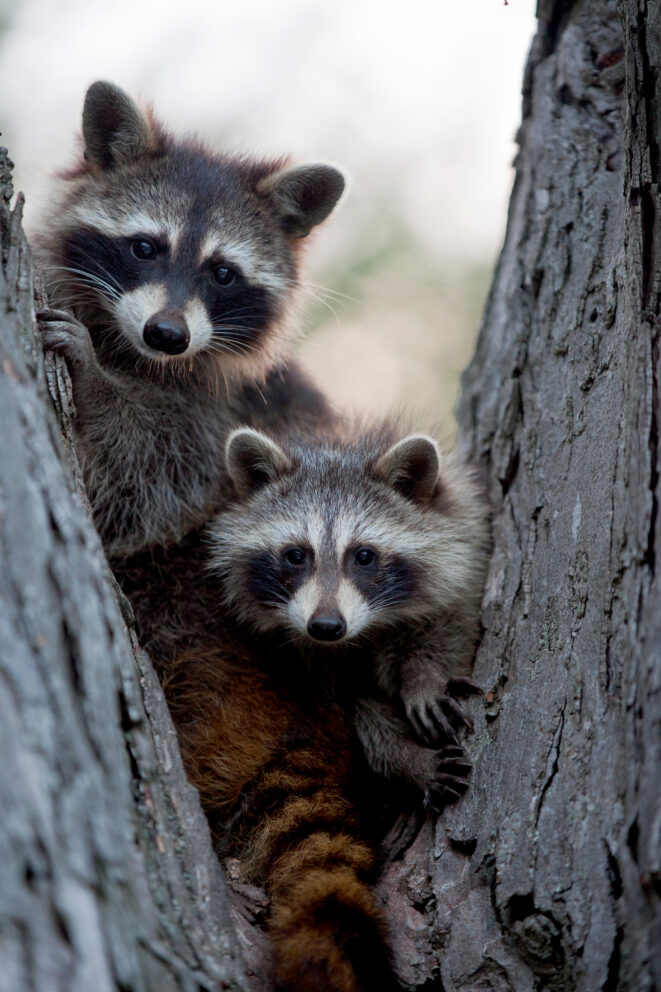- SCIENTIFIC NAME
- Crotaphytus bicinctores
- CLASSIFICATION
- Reptile
- LIFE SPAN
- 5-8 Years
- STATE CONSERVATION STATUS
-
- Priority Species
- Unprotected
- FEDERAL CONSERVATION STATUS
- Least Concern
- GAME STATUS
- Non-Game
- Washoe
- Humboldt
- Pershing
- Churchill
- Mineral
- Lyon
- Douglas
- Carson City
- Storey
- Elko
- Lander
- Eureka
- White Pine
- Esmeralda
- Nye
- Lincoln
- Clark
Habitat & Range
The Great Basin Collared Lizard is found mainly in desert, sparsely vegetated, rocky areas on hillsides, rocky plains, and in canyons. It perches atop rocks and hides under rocks or in rodent burrows when startled.
- Cold desert shrubland and sagebrush
- Mojave desert
- Warm desert riparian
Threats
- Habitat Degradation - Due to Invasive Species
- Overcollection
Natural History
The Great Basin Collared Lizard is easy to identify with its distinctive black collars around its neck. They eat a wide variety of insects, spiders, lizards, and some plant material. They use their powerful jaws and sharp teeth to subdue their prey.
These lizards are very speedy and can even run using only their hind legs. They do have several predators that they need that speed to escape from including other lizards, snakes, roadrunners, other birds, and predatory mammals.
Males become aggressive and very territorial in the breeding season. They tend to stand their ground on top of a rock, often raising up on their legs, bobbing up and down, and extending a blue and black throat dewlap in a threat display (which may also be attractive to females).
Fun Facts
